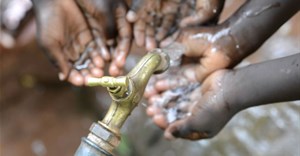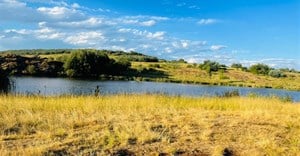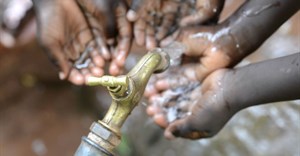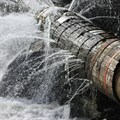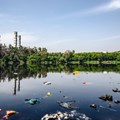World Water Day was on 22 March 2022. As we commemorated it, we must continue to reflect on how we have progressed in supplying a basic need of water to all, and what can still be done.

Source: Gallo/Getty
There are strides being made on global access to clean and safe water and sanitation. However, the world is far from reaching its universal access goal by 2030. Sustainable Development Goal 6 aims to achieve equitable access to safe and affordable drinking water for all by 2030. According to Ourworldindata.org, in 2020 only 74% of the global population had access to a safely managed water source, and in 2020 sub-Saharan Africa had 765,780,662 people without access to safe drinking water - rural households often lag on water access. Inadequate access to water is because of poor infrastructure integrity, growing water demands, degraded ecosystems, and insufficient water in storage. This does not paint a pleasant picture, however, there are ways to ensure that this is improved.
765.78
Infrastructure & UtilitiesJan Venter 11 Mar 2022
Siltation an old problem
South Africa is a water-scarce country and is heavily reliant on water stored in dams for its supply and provision. Siltation is an old problem; however, it has risen to prominence over the last couple of years due to the urgency of South Africa’s water issues. As of 2021, South Africa had 163 dams that were 25% silted, 25 dams with siltation levels between 25% and 50%, and two dams that were 90% silted. A good portion of the national dam’s face siltation because of natural processes and man-made decisions and activities.
This results in loss of storage capacity and reduced useable lifespan of dams. Siltation reaches the dams as it is transported through rivers. Catchment areas are degraded because of poor land-use activities and a lack of coordinated catchment management plans.
There is a need for a systematic and holistic approach to mitigate and manage the effects of dam siltation from its catchment area, which addresses the engineering, ecological, and social aspects. Siltation has been occurring for decades; its effects have been more visible in recent years as we plan to adapt to water and land issues related to population expansion and migration, economic growth, and climate change and weather variability. We cannot build more dams to solve the storage capacity loss, as there are not enough localities for large dams. The country needs a sustainable solution that looks at all sources of water and how we store it.
Circular Economy & Waste ManagementProfessor Anthony Turton 28 Mar 2022
Systematic approach to siltation management
South Africa does not have a specific policy or legislation that deals with preventing or managing siltation in dams, and it is imperative that this gap be addressed to assist with a systematic approach to siltation management. Institutional fragmentation is currently making it difficult for dam siltation management to be holistically implemented as different institutions have different mandates and priorities. There needs to be a logical approach to preventing, mitigating, and removing siltation build-up in dams. We need to be cognisant that dams are linked to a broader ecosystem in the catchment in which they occur. By treating the dam, catchment activities, and river as one system, this integrated approach to siltation management will ensure healthier catchments and preservation of storage capacity and at the same time create opportunities for jobs and economic development.
Dam engineering has a pivotal role to play in safeguarding water security, however, the design and construction of dams need to consider the impacts they have on the broader ecological systems. Uncoordinated development has resulted in dam siltation not being managed adequately. Ecosystems have been degraded through poor land use and planning. For dam siltation management to be successful, the efforts need to address the state of the existing dams, how they should be operated, and the management of activities within their respective catchments. While addressing the dam engineering components of dam siltation management, it is equally important to address the socio-ecological aspects of it. Poor land-use practices that lead to erosion need to be addressed and revegetation of catchment areas needs to be at the core of the various interventions.
Food, Water & Energy SecuritySindy Peters 25 Mar 2022
Skills development
Along with developing a strategy, tools, and models to mitigate against siltation, professionals, students, and civil society need to be capacitated on siltation management through skills development, upskilling, transfer of knowledge, and dissemination of case studies. If we want to develop a new cohort of siltation management professionals, South Africa should start at institutions of learning by offering introductory courses on integrated siltation management to ensure we grow the pool of experts in the field.
Communities in the areas where dams are located need to be capacitated on how they can play a role in preventing land degradation and siltation. We are all affected by the impacts of siltation; raising awareness of the causes, effects, and management of siltation needs to be elevated to move all of our roles into a water stewardship one. Decision-makers need to be empowered with knowledge that will enable them to effect change.
Food, Water & Energy Security 6 Apr 2022
National strategy on dam siltation management
With there not being a specific policy and legislation on siltation management in the country, and a lack of a holistic and pragmatic approach to siltation management, the Water Research Commission has been tasked by the Department of Water and Sanitation to develop a national strategy on dam siltation management. A large focus will be on collaboration between institutions that include civil society, public institutions, and the research and development sector.
This is also a clarion call for all of us to ensure that future generations have adequate water infrastructure, access to clean, safe water, and to protect our water source areas.




